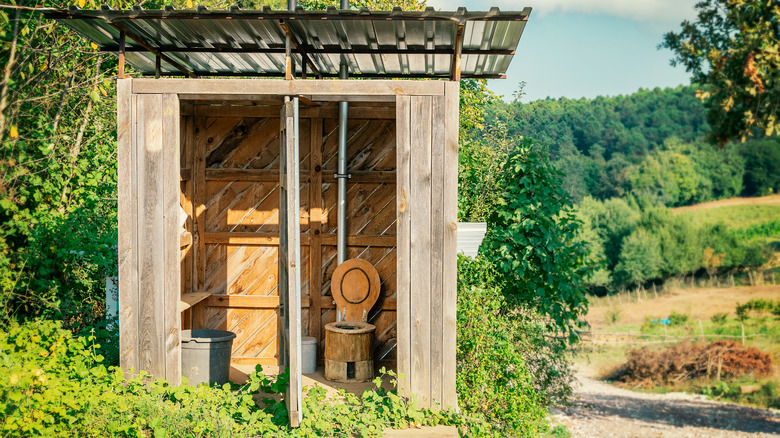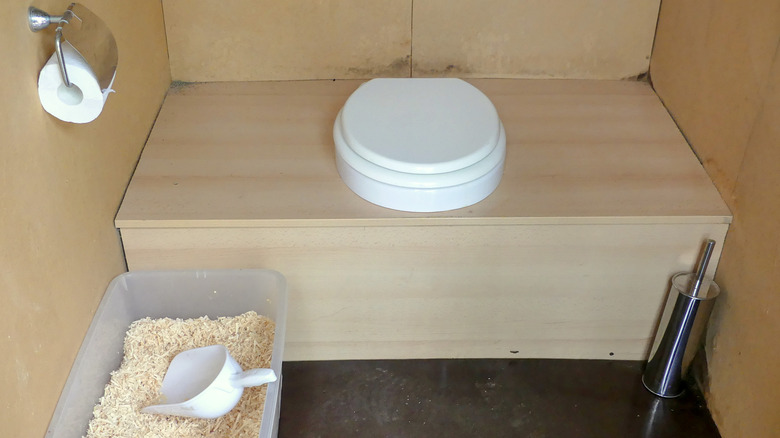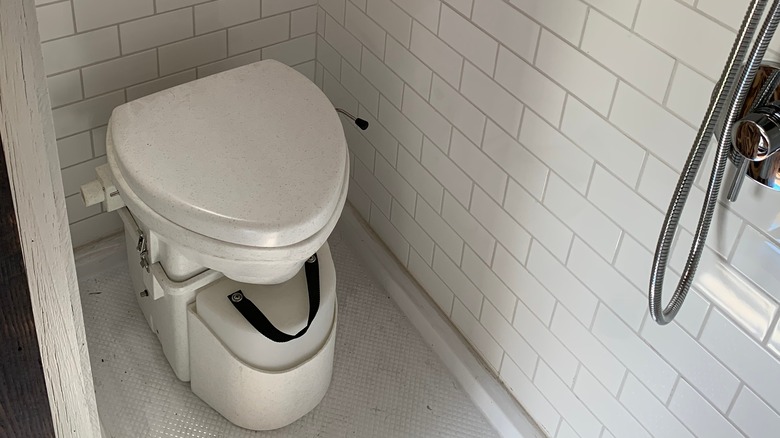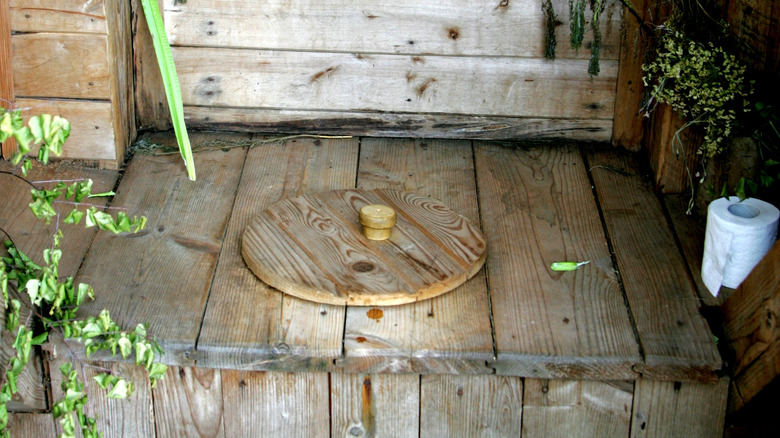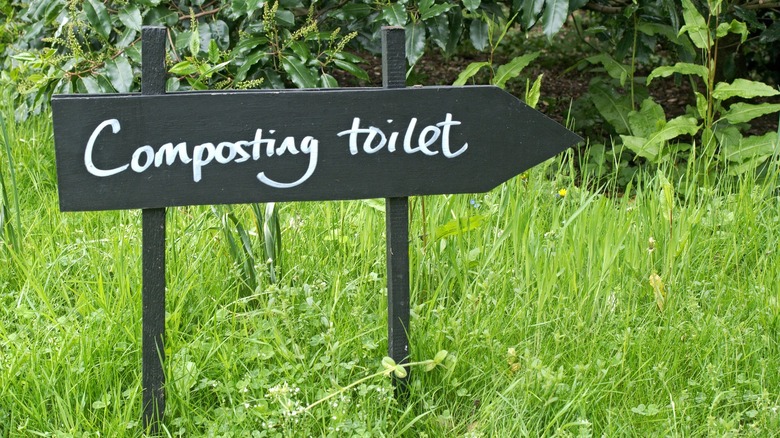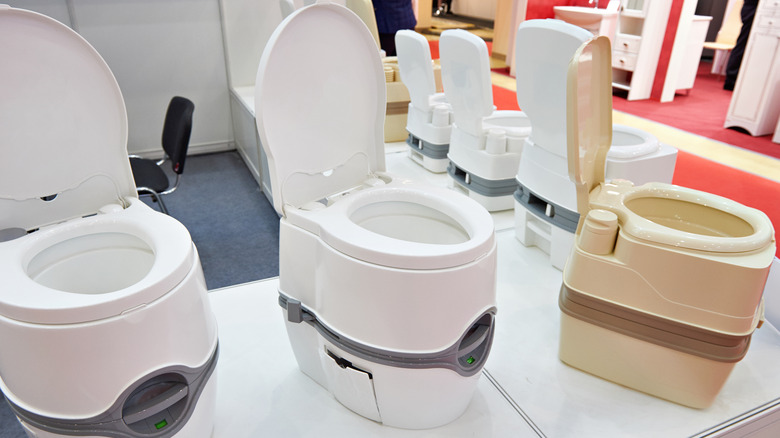What Is A Composting Toilet And Do You Need One?
If you've ever been to a camping site, gas station, music festival, or any type of rural area, then you've likely already seen a composting toilet. Also known as "dry toilets" due to the fact they work with no water, these eco-friendly toilets are not to be confused with port-o-potties; they are uniquely designed to turn waste into compost. Usually separating liquids from solids, the process results in transformed waste that can be disposed of (if allowed by your area) or in most cases, used in a garden.
Dry toilets started making their appearance in the late 19th century with "dry earth closets" invented by Henry Moule. This was the very beginning of what we now call composting toilets. They then evolved over the years to include a urine diversion system or a ventilation unit as well as other features. Composting toilets are now used around the world.
Seeing as an average flushing toilet uses 1.6 gallons of water per flush, according to the United States Environmental Protection Agency, the composting toilet is a great eco-friendly alternative. Green Living Ideas states that a composting toilet can save you up to 6,752 gallons of water a year. We went ahead and did some research on exactly what you should know if you are thinking of buying a composting toilet.
How does a composting toilet work?
A composting toilet is relatively simple and straight to the point. According to Green Matters, these toilets work by creating an oxygen-rich environment that helps the aerobic bacteria to break down the waste, therefore composting it. Air pockets can be created in different ways to facilitate this natural process by using materials such as sawdust, coconut coir, or peat moss. Composting toilets have two different parts: the top part where you sit and the bottom one where the waste is collected then composted, and that can be either above or below ground. That bottom part usually has up to four parts that are the storage, a ventilation unit to facilitate composting and to prevent odor, a urine diversion system to remove excess liquid, and an access door to dispose of the composted waste.
If you are a simple user, a composting toilet is exactly like a normal toilet except that you don't have to flush it. If you are a composting toilet owner, then you do have to keep a couple of things in mind as it's not exactly like having a regular toilet.
The different types of composting toilets
There are two main types of composting toilets according to Bob Vila: the self-contained system and the central system toilet. The self-contained toilet has its whole composting system right there below the area where waste is collected. Once it has the waste, the toilet will commence the composting process and the composted waste will find itself in a tank that has to be manually emptied once full. This system is perfect for places that plumbing doesn't reach or mobile spaces like boats, RVs, buses, or tiny houses.
On the other hand, we have a central system toilet that requires a bit more work as it is connected to a pipe system that disposes of the waste by bringing it to an external composter. This system is a bit more expensive but is ideal for parks or larger compounds as it can be connected to multiple toilets.
Pros and cons of composting toilets
The biggest con to keep in mind if you own a composting toilet is the maintenance level. While flushing toilets don't require a lot of maintenance other than a standard cleaning process, a composting toilet has to be kept up to avoid odors and to facilitate the composting process. In fact, a good balance between nitrogen and carbon must be kept at all times for the aerobic bacteria to break down waste efficiently. This can be achieved by using carbon-heavy materials. In addition, a composting toilet has to be kept at a temperature between 60 and 100 degrees Fahrenheit, says Planet Natural, as well as have moisture levels as low as possible at all times (made easy by urine-diverting mechanisms). Another con to consider is that you will most likely be required to remove and dispose of the waste manually. This will have to happen pretty frequently if you're using a self-contained toilet, but can be only about once a year for central system composting toilets. (Quick tip: Be sure to wait at least eight hours after the last use before emptying it for the composting process to be completely done.)
On the pro side, the composting toilet is the best toilet option for environmental reasons. The eco-friendly alternative allows you to not only save money, but also save water. The composting toilet reduces your impact on the environment and even better, it serves to create compost for plants. The composting toilet is also a great solution if you are in an area with a low water supply an/or poor sewage treatment. This would apply to anyone living on the go in an RV, in a home-on-wheels, or any off-the-grid situation, for example. Lastly, the cost is a significant pro. A composting toilet can vary from costing $50 to $100 if you decide to make it a DIY project to costing a couple thousand dollars. The budget is therefore pretty flexible depending on your needs and wants.
Legal restrictions for composting toilets
As for if there are legal restrictions concerning composting toilets, there aren't any big ones, but if you are thinking of owning a composting toilet you should look into your local and state regulations. According to Hunker, not all states will allow you to install a composting toilet however you'd like or at all in some cases. For example, certain states like Indiana have made it nearly illegal to live off-the-grid, so owning a composting toilet may not even make sense.
Other states have welcomed composting toilets as long as specific rules are followed, like Alabama and Arizona where a permit is required. Additionally, some states like Florida, Illinois, and Pennsylvania require a National Sanitation Foundation (NSF) certification (either way it might be better to have one for health and safety reasons). You also have states like Michigan where the laws on waste vary from county to county.
Where to buy a composting toilet
Home appliance stores are definitely your best bet if you are looking to purchase a composting toilet. Prices will stay pretty much the same whether you buy your composting toilet at Home Depot or Lowe's, so it just comes down to personal preference. You can also find composting toilets at Walmart or Amazon, according to The Spruce, so be sure to search those retailers for more affordable options.
Wherever you are located, prices will start at around $600 for a small, simple, portable composting toilet and can go all the way up to over $2,000 for the fancy, high-capacity composting toilets that are preferred for residential use. Overall, the place where you buy your composting toilet will depend on what your specific needs are. Some will have the best odorless toilets, while others will have the best portable toilets, budget-friendly toilets, or portable toilets.
